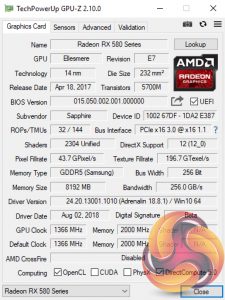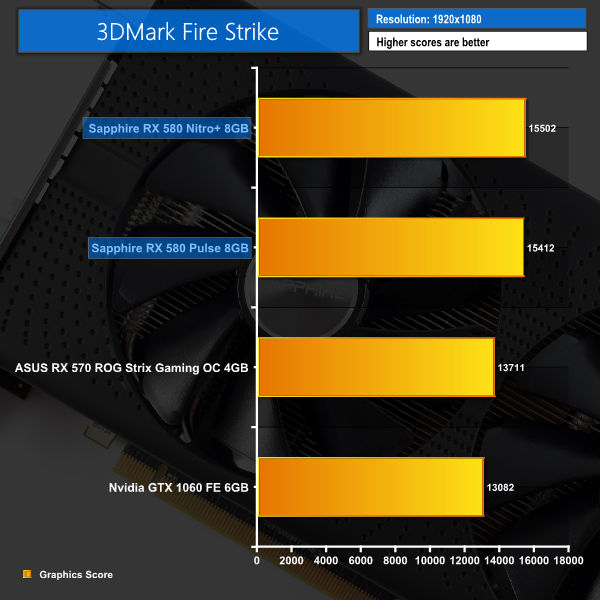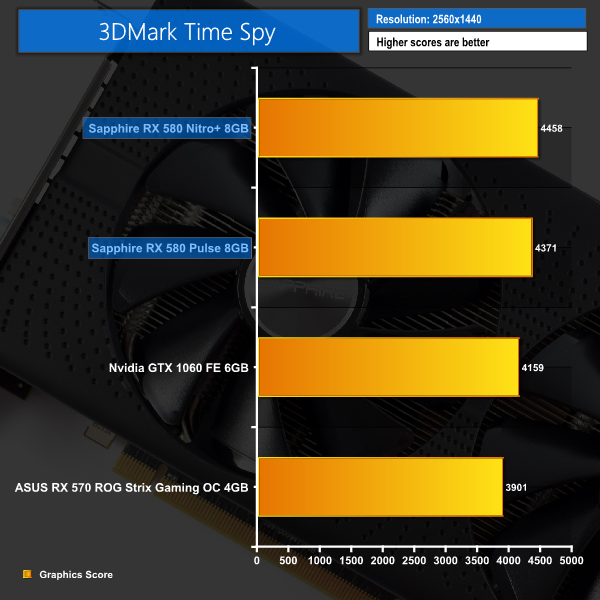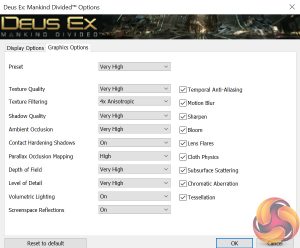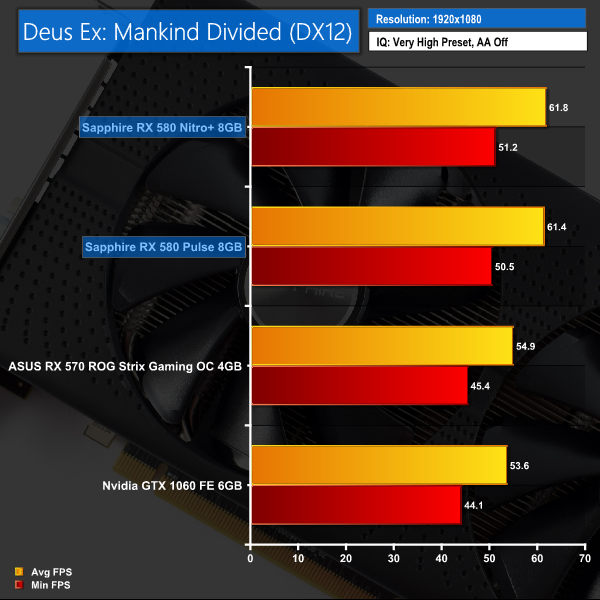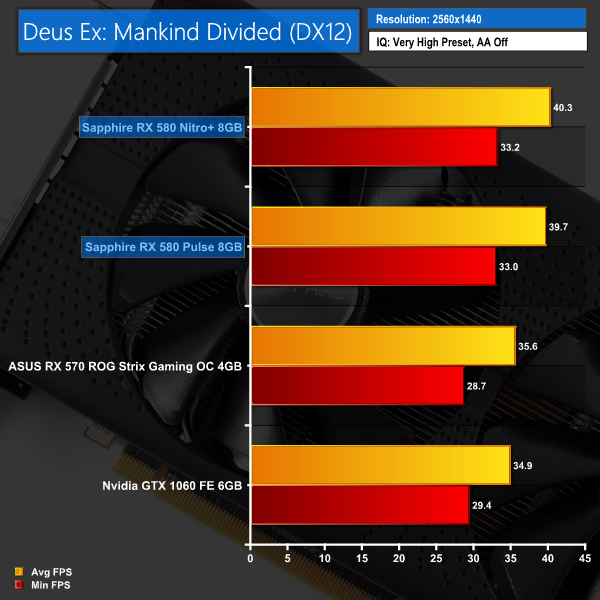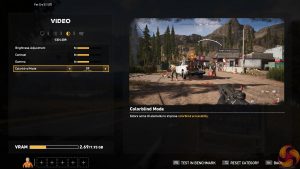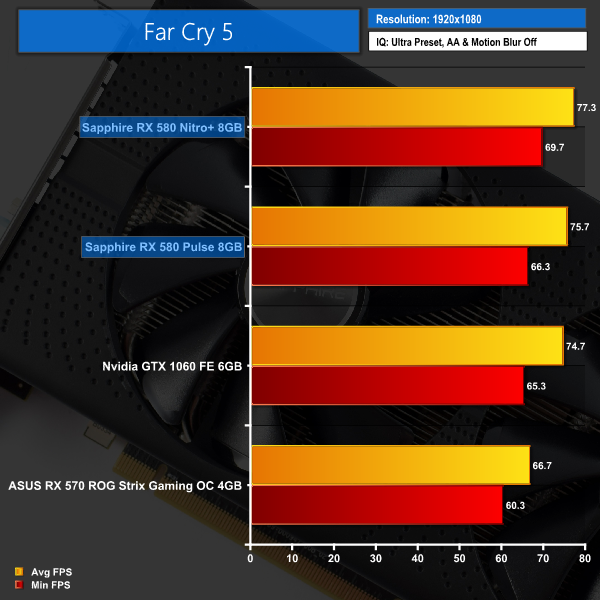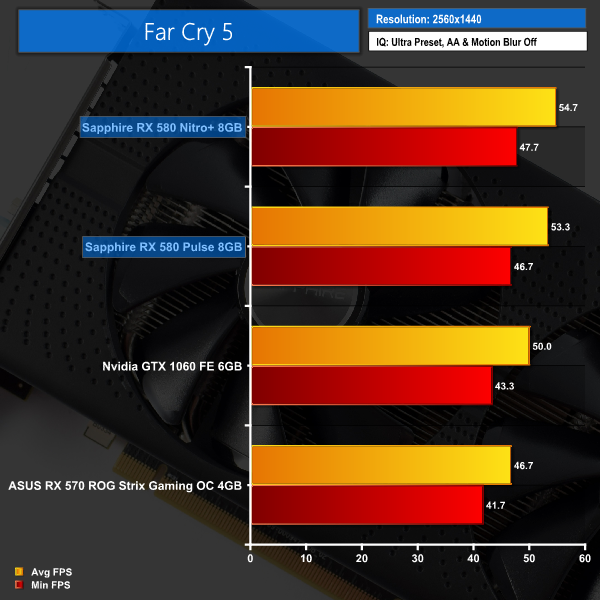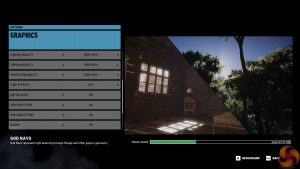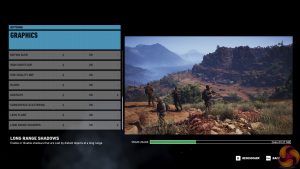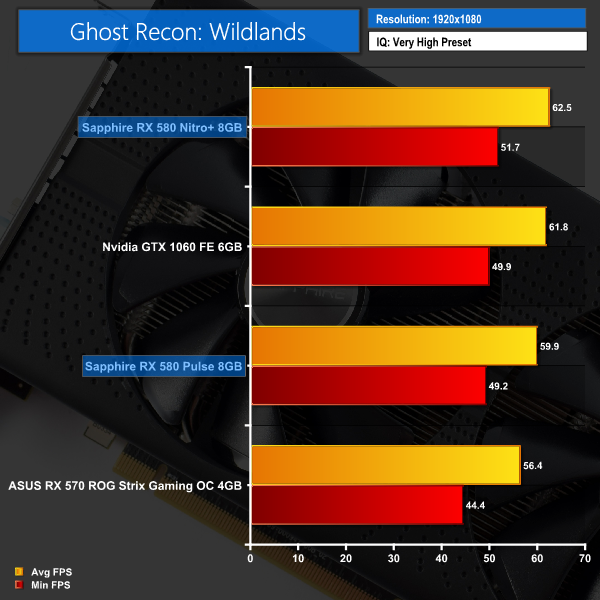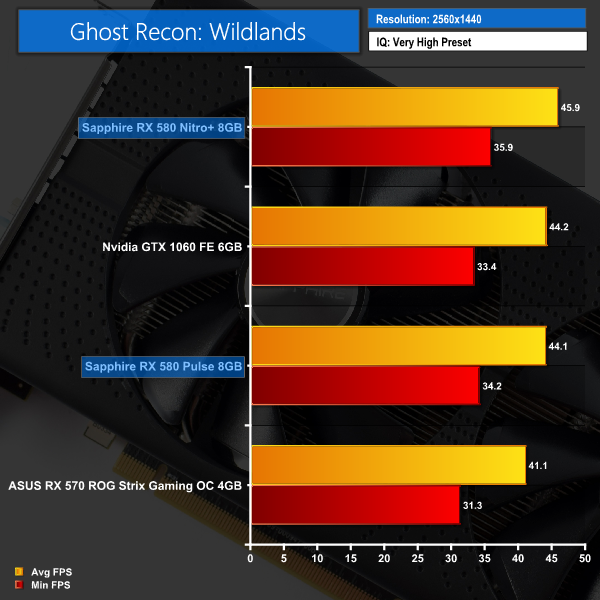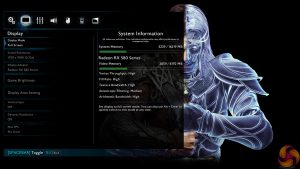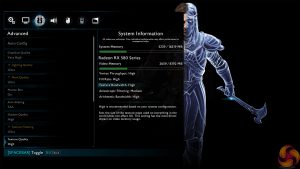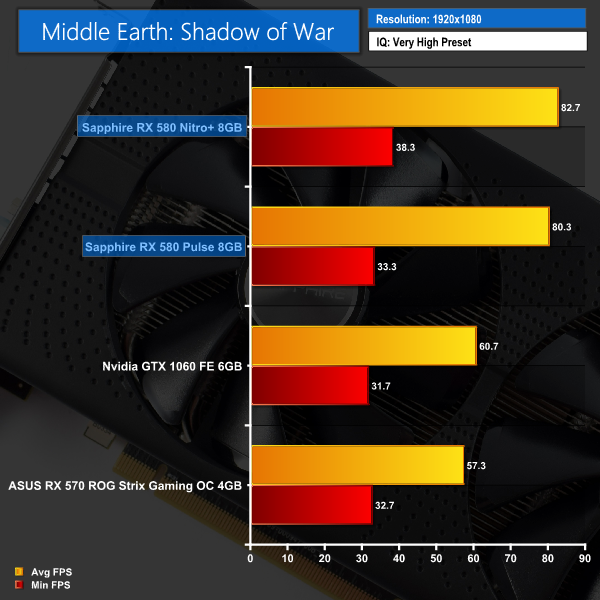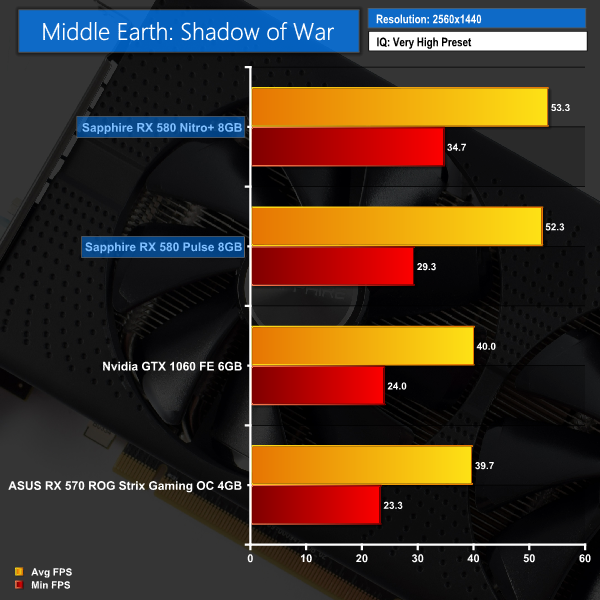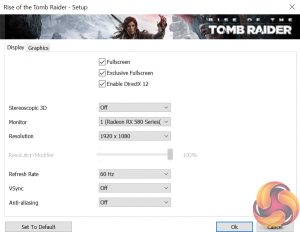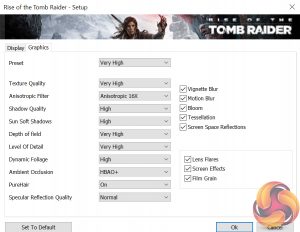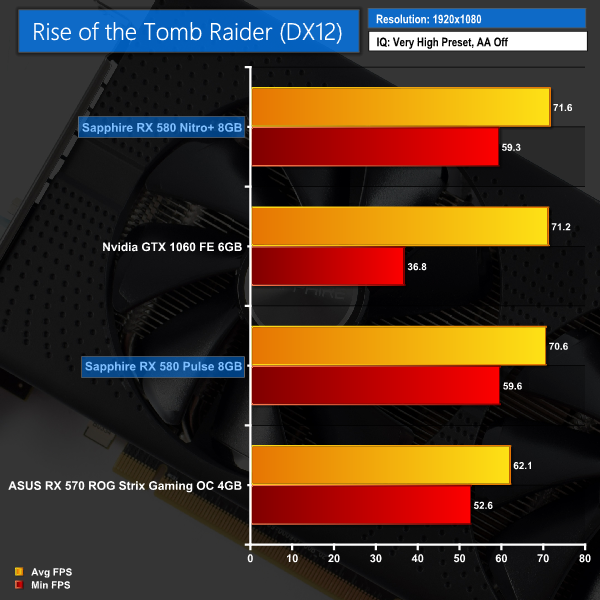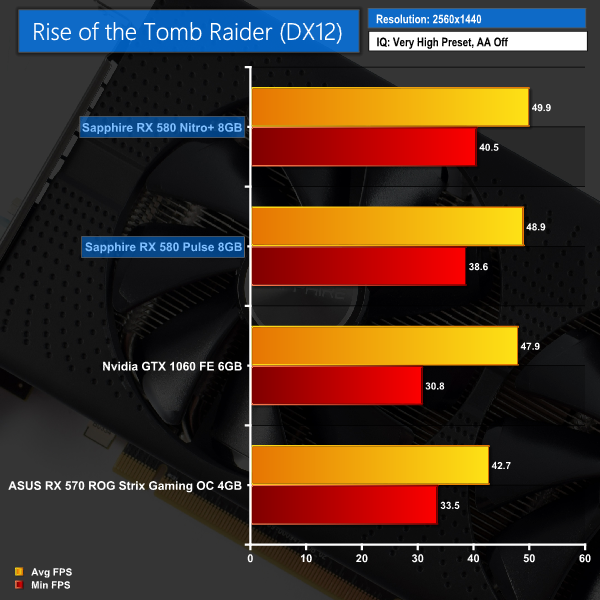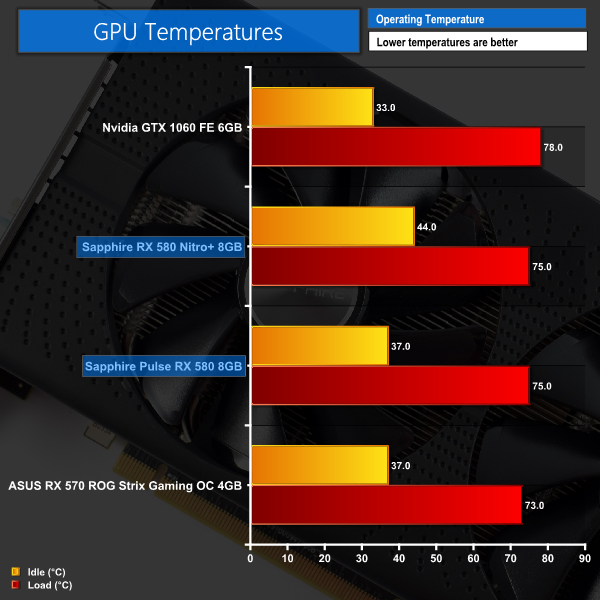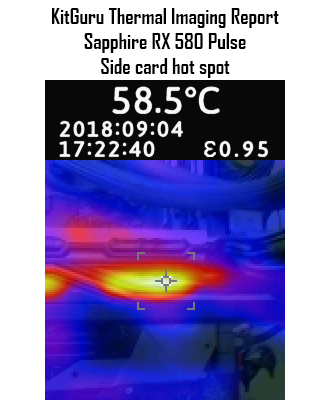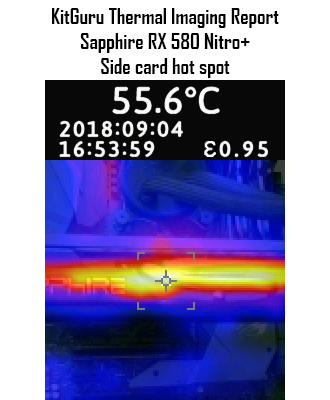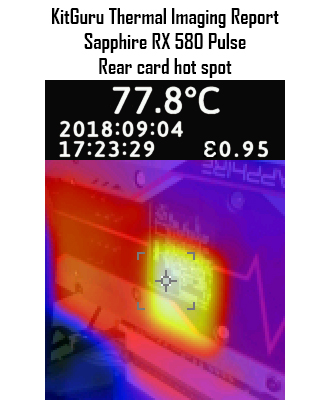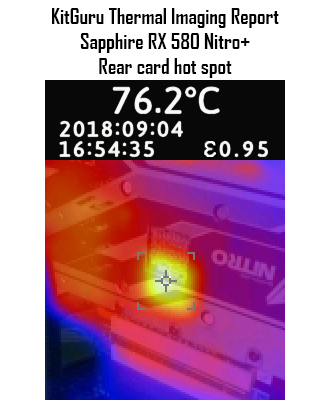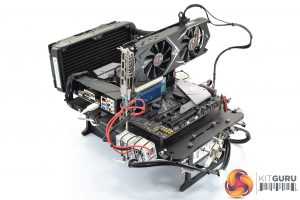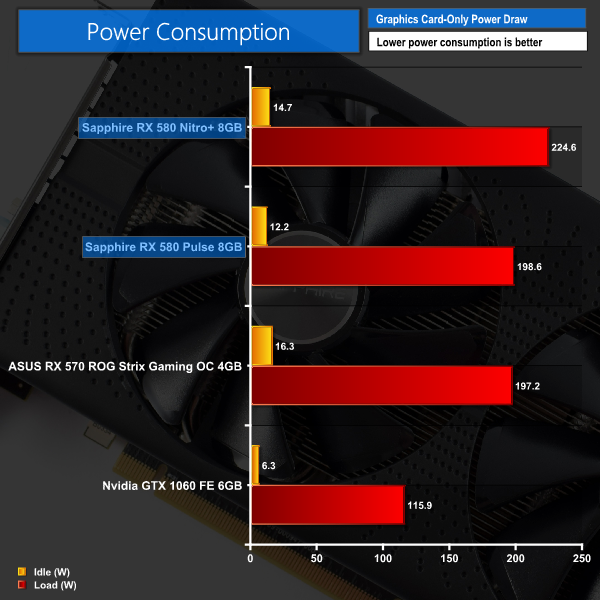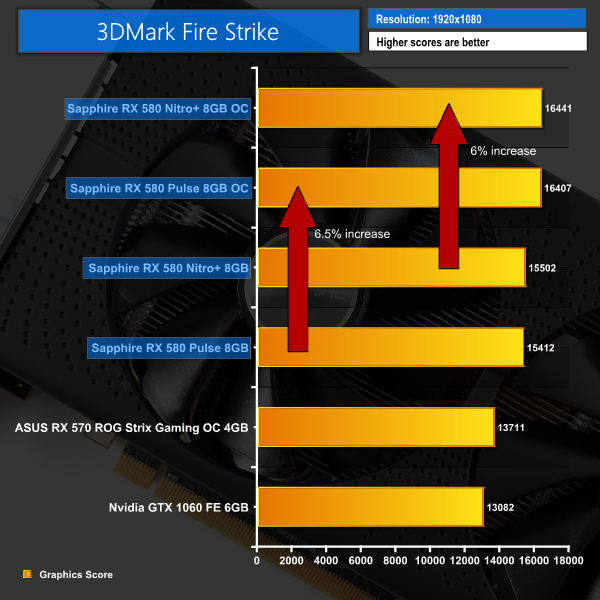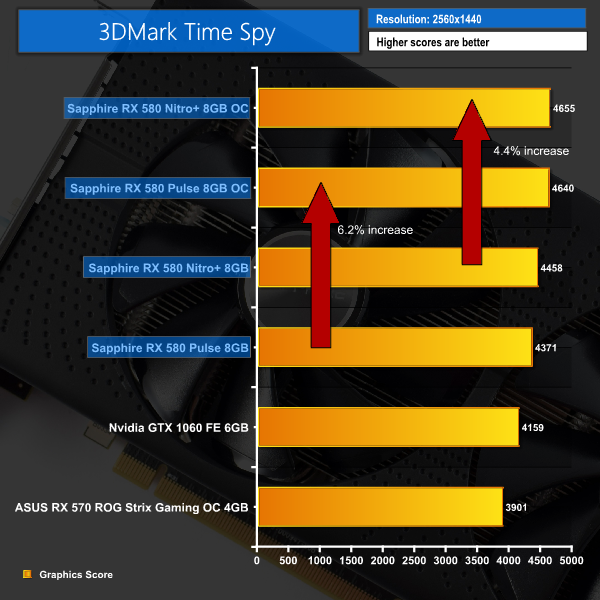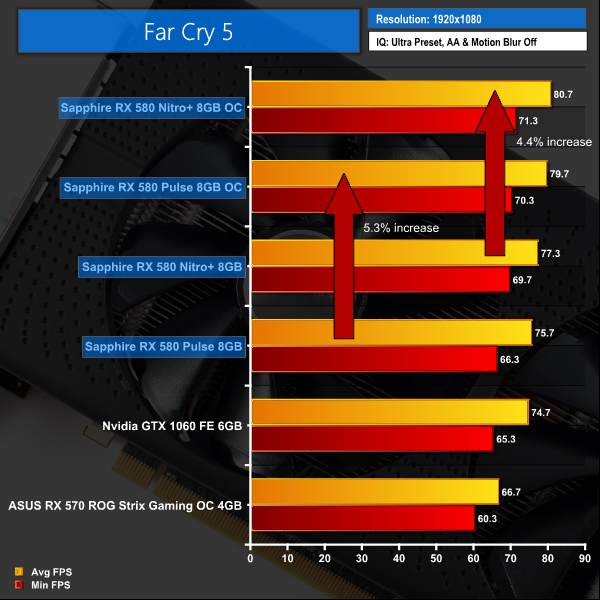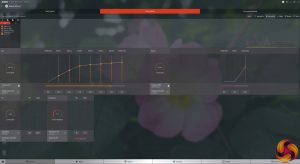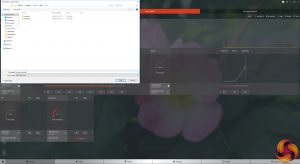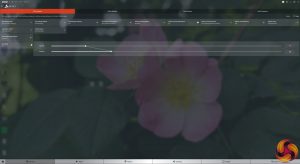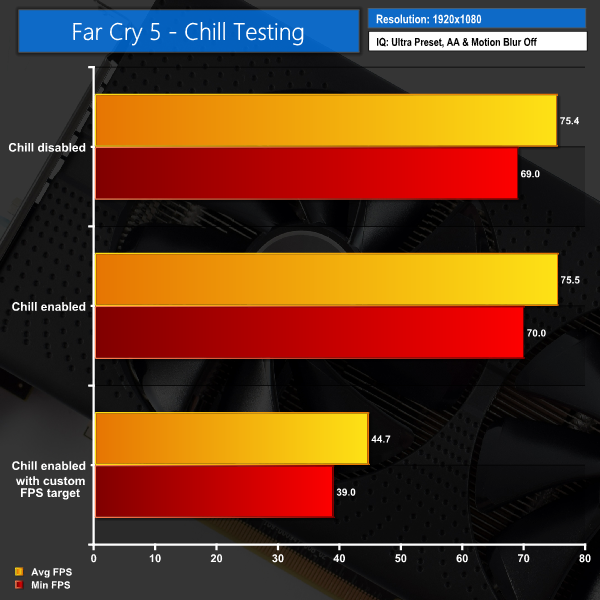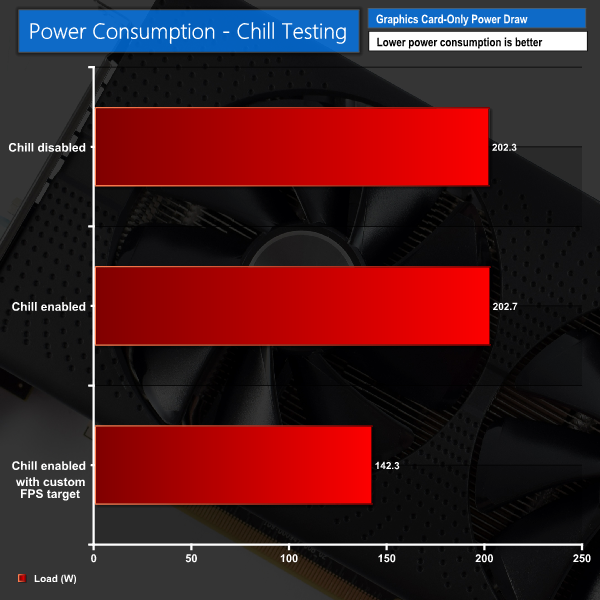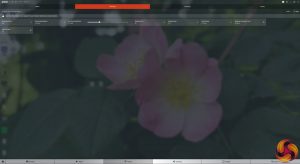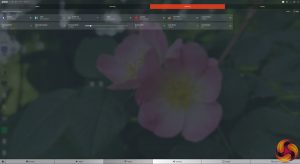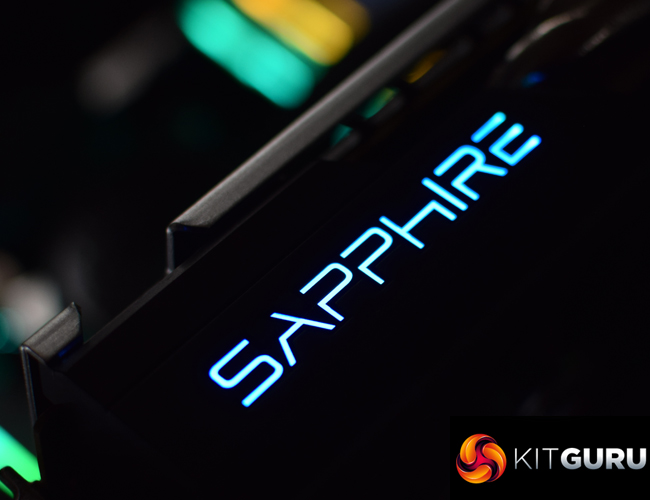Nvidia's RTX 20 series may be just weeks away, but if you want a mid-range graphics card from AMD, then the RX 580 is still your best bet. For this article, Sapphire sent us two of its aftermarket RX 580 8GB cards – the Pulse and the Nitro+. Our aim? To compare the two cards and see what you gain (or lose) by going for one over the other. Lets see how they stack up against each other.
If you are looking for an aftermarket RX 580 right now, you will find plenty of options, including a selection of 4GB and 8GB models. How do you know which to go for, when pricing can vary significantly between cards? Sapphire wants to make this process a bit easier for you by comparing its Pulse 8GB and Nitro+ 8GB RX 580 cards head-to-head.

At the time of writing, the Pulse 8GB can be found for £260, while the Nitro+ retails for £299. We look at the differences between the two cards in terms of feature set, build and aesthetics, as well as performance.
Watch via Vimeo (below) or over on YouTube at 2160p HERE
| RX 580 8GB Pulse | RX 580 8GB Nitro+ | |
| Clock Speed | 1366MHz boost | 1411MHz boost |
| Memory Speed | 2000MHz (8000MHz effective) | 2000MHz (8000MHz effective) |
| Memory Bandwidth | 256GB/s | 256GB/s |
| Bus Width | 256-bit | 256-bit |
| Form-factor | 2-slot | 2.2-slot |
| Dimensions | 230 X 125 X 40mm | 260 X 135 X 43mm |
| Display Outputs | 1x DL-DVI-D 2x HDMI 2.0b 2x DisplayPort 1.4 |
1x DL-DVI-D 2x HDMI 2.0b 2x DisplayPort 1.4 |
| Power Consumption | <225W | <235W |
| Power Requirement | 1 x 8-pin | 1 x 8-pin + 1 x 6-pin |
Pulse on the left, Nitro+ on the right
As you can see from the spec comparison table, and the GPU-Z screenshots above, core specification is almost identical between the two cards – they are, after all, both RX 580s. This means both have 2304 stream processors, 8GB GDDR5 VRAM, a 256-bit memory bus and so on. The only difference here is the rated boost clock – the Pulse card runs up to 1366MHz, whereas the Nitro+ is slightly faster at up to 1411MHz.
There are more differences when we compare the cards' features, however. The Pulse card is the cheaper unit, so it lacks a few features included with the Nitro+. These include:
- Dual-BIOS functionality
- RGB Sapphire logo
- NITRO Boost
- NITRO FanCheck
- NITRO CoolTech (NCT)
- Robust VRM cooling
Some of those may not bother you – ‘Robust VRM cooling' for instance, only means to suggest that the Nitro+ has a superior VRM cooling solution, when (as we will look at on the next page) the Pulse is still perfectly fine in this regard. Dual-BIOS functionality is something I am appreciative of, though, as it means you have a fall-back in case you brick the card's primary BIOS.
RGB fiends among you will also be disappointed to discover the Pulse does not have a single bit of lighting – anywhere! If you want to colour-match your graphics card to the rest of your system, the Nitro+ is the card to get.

Pulse – left, Nitro+ – right
Getting our first look at the two cards' respective design, it is safe to say they both look very similar on first impressions. Both have matte black shrouds made from plastic, and both have the same ‘dimpled' look with lots of small circles dotted over the shroud.
The primary difference in terms of styling, is that the Nitro+ has a small grey/silver strip that runs through the middle of its shroud – the Pulse is lacking this extra bit of style. Both sets of fans, however, measure 95mm.
It is worth noting while we are here, though, that the Nitro+ is a bigger card. It measures 260 X 135 X 43mm, whereas the Pulse card measures 230 X 125 X 40mm – so it is both shorter and slightly thinner. This is definitely a factor for those with smaller systems – if you are putting together a new HTPC in an ITX chassis, for instance, you will want to consider how large a card will fit in your enclosure.
Pulse – left, Nitro+ – right
Moving on to get a look at the sides of each card, you will notice here that the heatpipes have a slightly different design from card to card. On the Nitro+, for instance, they are much more exposed – whereas the Pulse has an extended plastic shroud which covers more of its heatpipes. We will get a closer look at the cooling setups below.
Pulse – left, Nitro+ – right
Once the coolers are removed from the cards, we can examine the PCBs. The primary thing to note here is the slightly different power phase design – the Pulse card sports a 4+2 design, compared to the 6+2 design of the Nitro+. The Nitro+, as mentioned, also has a dual-BIOS setup which the Pulse card lacks.
You will remember we mentioned on the previous page that the Nitro+ supposedly features ‘Robust VRM cooling' which the Pulse lacks. As far as I can tell, this is just marketing – both cards feature the same small heatsinks atop the VRM's inductors which will help dissipate heat.
Pulse – left, Nitro+ – right
Cooling solutions are similar, but not quite identical. The Pulse heatsink utilises 4x 6mm nickel-plated heatpipes, whereas the Nitro+ card uses 2x 6mm and 2x 8mm heatpipes. Each also has the necessary thermal pads for the VRAM chips and MOSFETs, although the VRAM pads appear to be missing from the Nitro+ heatsink as they stuck to the VRAM chips themselves.
To give you an idea of the difference in size of the two heatsinks, we weighed each one. The Nitro+'s heatsink weighs 359g, whereas the Pulse's heatsink weighs 321g. It will be interesting to see how this makes a difference when we look at thermal dynamics later on in the article.
Pulse – left, Nitro+ – right
Stylistically, the cards diverge most when it comes to the backplate design. The Pulse sports an EKG graph (hence the pulse name) in red, set on a black section, with grey and silver areas as well. Personally I find it quite stylish, but compared to the monochrome backplate of the Nitro+, the Pulse is much more likely to clash with your system's colour scheme – definitely something to consider.
Interestingly, the Pulse card also sports a much larger cut-out behind the GPU core. We would still expect the backplate to dissipate the heat from the back of the PCB, but it is interesting to see the Nitro+ card have a much smaller cut-out behind the GPU core.
Pulse – left, Nitro+ – right
As you might have been able to tell from some of the other images above, the Pulse only requires a single 8-pin PCIe power connector, whereas the Nitro+ requires 1x 8-pin and 1x 6-pin. Sapphire lists the power consumption as <225W for the Pulse, and <235W for the Nitro+ – the 10W difference because of the Nitro+'s higher clock speed. We will of course test this for ourselves later in the article.
Pulse – left, Nitro+ – right
Lastly, display outputs are identical. This means both cards sport 1x DL-DVI-D, 2x HDMI 2.0b and 2x DisplayPort 1.4.For testing the two RX 580 cards today, we ran our games and synthetic benchmarks at 1080p and 1440p. Usually we run tests at 2160p (4K) as well, but since the focus is very much on the differences between the two cards – not overall performance – we have opted to remove the 4K testing as we already know this is not the target market for the RX 580 GPU.
The Nitro+ also has dual-BIOS functionality. One BIOS runs the core at up to 1411MHz, while the other BIOS runs the core up to 1340MHz. We tested using the faster BIOS.
Pulse on the left, Nitro+ on the right
Driver Notes
- AMD graphics cards were benchmarked with the Adrenalin 18.8.1 driver.
- Nvidia Graphics cards were benchmarked with the Nvidia 398.82 driver.
Test System
We test using the Overclockers UK Germanium pre-built system. You can read more about it over HERE. It is important to note we have had to re-house the components to an open-air test bench to accommodate our new GPU power testing (more on that later) but the core of the system is unchanged and the performance figures you see presented here are what you can expect from the Germanium.
| CPU |
Intel Core i7-8700K
Overclocked to 4.8GHz |
| Motherboard |
ASUS ROG Strix Z370-F Gaming
|
| Memory |
Team Group Dark Hawk RGB
16GB (2x8GB) @ 3200MHz 16-18-18-38 |
| Graphics Card |
Varies
|
| System Drive |
Patriot Wildfire 240GB
|
| Games Drive | Crucial M4 512GB |
| Chassis | Streacom ST-BC1 Bench |
| CPU Cooler |
OCUK TechLabs 240mm AIO
|
| Power Supply |
SuperFlower Leadex II 850W 80Plus Gold
|
| Operating System |
Windows 10 Professional
|
Comparison Graphics Cards List
- Nvidia GTX 1060 Founders Edition (FE) 6GB
- Sapphire RX 580 Nitro+ 8GB
- Sapphire RX 580 Pulse 8GB
- ASUS RX 570 ROG Strix Gaming OC 4GB
Software and Games List
- 3DMark Fire Strike (DX11 Synthetic)
- 3DMark Time Spy (DX12 Synthetic)
- Deus Ex: Mankind Divided (DX12)
- Far Cry 5 (DX11)
- Tom Clancy’s Ghost Recon: Wildlands (DX11)
- Middle Earth: Shadow of War (DX11)
- Rise of the Tomb Raider (DX12)
We run each benchmark/game three times, and present averages in our graphs.3DMark Fire Strike is a showcase DirectX 11 benchmark designed for today’s high-performance gaming PCs. It is our [FutureMark’s] most ambitious and technical benchmark ever, featuring real-time graphics rendered with detail and complexity far beyond what is found in other benchmarks and games today.
Things are neck-and-neck in our first two synthetic tests – the gap between the two cards is just 90 points in Fire Strike, barely 0.6%.
Interestingly, though, both cards beat out the GTX 1060 across both tests.Deus Ex: Mankind Divided is set in the year 2029, two years after the events of Human Revolution and the “Aug Incident”—an event in which mechanically augmented humans became uncontrollable and lethally violent. Unbeknownst to the public, the affected augmented received implanted technology designed to control them by the shadowy Illuminati, which is abused by a rogue member of the group to discredit augmentations completely. (Wikipedia).
We test using the Very High preset, with MSAA disabled. We use the DirectX 12 API.
In our first game, the margins are again very small – even at 1080p, the gap (on average) between the two cards is just 0.4 FPS.Far Cry 5 is an action-adventure first-person shooter game developed by Ubisoft Montreal and Ubisoft Toronto and published by Ubisoft for Microsoft Windows, PlayStation 4 and Xbox One. It is the eleventh entry and the fifth main title in the Far Cry series, and was released on March 27, 2018.
The game takes place in the fictional Hope County, Montana, where charismatic preacher Joseph Seed and his cult Project at Eden’s Gate holds a dictatorial rule over the area. The story follows an unnamed junior deputy sheriff, who becomes trapped in Hope County and works alongside factions of a resistance to liberate the county from Eden’s Gate. (Wikipedia).
We test using the Ultra preset, with AA and motion blur disabled.
The Nitro+ stretches its lead to almost 2FPS on average while playing Far Cry 5 at 1080p. The difference between the two cards is still slim.Tom Clancy’s Ghost Recon Wildlands is a tactical shooter video game developed by Ubisoft Paris and published by Ubisoft. It was released worldwide on March 7, 2017, for Microsoft Windows, PlayStation 4 and Xbox One, as the tenth installment in the Tom Clancy’s Ghost Recon franchise and is the first game in the Ghost Recon series to feature an open world environment. (Wikipedia).
We test using the Very High preset.
The Nitro+ averages a 2.6FPS lead over the Pulse at 1080p while playing Ghost Recon: Wildlands, but interestingly the Pulse card slips behind the GTX 1060 at 1440p. Middle-earth: Shadow of War is an action role-playing video game developed by Monolith Productions and published by Warner Bros. Interactive Entertainment. It is the sequel to 2014’s Middle-earth: Shadow of Mordor, and was released worldwide for Microsoft Windows, PlayStation 4, and Xbox One on October 10, 2017. (Wikipedia).
We test using the Very High preset.
Shadow of War shows big gains for both RX 580 cards compared to the GTX 1060, but again there is very little between the two. The gap is 2.4FPS at 1080p and exactly 1FPS at 1440p. Rise of the Tomb Raider is an action-adventure video game developed by Crystal Dynamics. It is the sequel to the 2013 video game, Tomb Raider, and the eleventh entry in the Tomb Raider series. The game was released by Microsoft Studios for Xbox One and Xbox 360 in 2015. Square Enix released the game for Microsoft Windows and PlayStation 4 in 2016. (Wikipedia).
We test using the Very High preset, with MSAA disabled. We use the DirectX 12 API.
Our last game – Rise of the Tomb Raider – confirms the trend we have seen across all 5 titles tested today – that both Sapphire RX 580 cards perform very similarly.For our temperature testing, we measure the peak GPU core temperature under load, as well as the GPU temperature with the card idling on the desktop. A reading under load comes from running the 3DMark Fire Strike Ultra stress test 20 times. An idle reading comes after leaving the system on the Windows desktop for 30 minutes.
Funnily enough, the GPU core peaked at 75C for both Sapphire RX 580s, with the two cards flitting between 74-75C by the end of the stress test.
Looking at the clock speeds of the cards, the Pulse recorded an average core frequency of 1331MHz during the stress test, while the Nitro+ ran at an average speed of 1348MHz. This shows that while each card would not ultimately get hotter than the other, you do get a higher operating frequency with the Nitro+, despite the core temperature remaining the same. Noise levels are also a factor with this, but we look at that on the next page.
You will notice that the Pulse card idled at a lower temperature, however. From my testing with the two cards, this is because the Pulse card would keep its fans spinning longer – when, at the same point, the Nitro+ had already turned its fans off. This means the Pulse card posted a lower idle temperature result, but the Nitro+ would get quieter, faster by turning its fans off quicker.
Moving onto the thermal gun testing, both cards got roughly as hot as each other on the front side. This is where the Nitro+ has its exposed heatpipes, so it looks like it has a higher concentration of heat compared to the Pulse – but in actual fact, its peak here was lower than that of the Pulse card, by almost 3C.
On the rear of each of the cards, the hot spot is unsurprisingly directly behind the GPU core. Both cards have a cut-out in the backplate here, and you can clearly see the peak zone in the thermal images. It is worth noting, however, that the hot spot on the Pulse card is noticeably larger – purely because it has a larger cut-out in its backplate.
The Pulse did peak 1.6C hotter than the Nitro+, but the difference is inconsequential – neither result is even close to the danger zone. Compared to the ASRock RX 580 Phantom Gaming X, which peaked at 90.4C due to its lack of a backplate, both results are impressive and should not be a cause for concern.
We take our noise measurements with the sound meter positioned 1 foot from the graphics card. I measured the sound floor to be 34 dBA, thus anything above this level can be attributed to the graphics cards. The power supply is passive for the entire power output range we tested all graphics cards in, while all CPU and system fans were disabled.
A reading under load comes from running the 3DMark Fire Strike Ultra stress test 20 times. An idle reading comes after leaving the system on the Windows desktop for 30 minutes.
There is no doubt that the Nitro+ is the quieter card. The Pulse isn't loud – compared to the ASUS RX 570, for instance, it much easier on the ears – but the Nitro+ is simply one the quietest graphics cards I have ever tested.
This is obviously because the fans run slower on the Nitro+ – at an average of 1149RPM during the stress test, where the Pulse fans ran at 1544RPM. However, this is even more impressive when you consider the fact that both cards peaked at 75C. So the Nitro+ is not only running slightly faster, but its fans are also spinning slower – yet it doesn't get hotter than the Pulse.
This can be explained by the physical attributes of the Nitro+ – it is a larger card, with a bigger heatsink, while two of its heatpipes are also slightly thicker. This means there is just more surface area for the heat to dissipate, meaning it can run both faster and quieter than the Pulse, while maintaining the same core temperature.
Both cards do stop the fans from spinning during light loads, too, so you will have silent operation while browsing the web or emailing. We already mentioned on the previous page that I found the Pulse card does spin for longer before its fans eventually stop completely, but you will be able to enjoy peace and quiet with both cards if you're not gaming.We have recently revamped our GPU power consumption testing. Previously we would measure the total system power draw with each graphics card installed. Given that the rest of the components did not change, this gave us an idea of the relative power consumption of each graphics card, but we could not be more specific than that.
Now, however, thanks to Cybenetics Labs and its Powenetics Project, we are able to measure the power consumption of the graphics card alone, giving much more precise and accurate data. Essentially, this works by installing sensors in the PCIe power cables, as well as the PCIe slot itself thanks to a special riser card. This data is recorded using specialist software provided by Cybenetics Labs and given it polls multiple times a second (between 6 and 8 times a second, based on my observations) we can track the power consumption in incredible detail over any given amount of time.
You can read more about the Powenetics Project over HERE.
As with previous testing, a reading under load comes from running the 3DMark Fire Strike Ultra stress test 20 times. An idle reading comes after leaving the system on the Windows desktop for 30 minutes. This stress test (20 runs) produces approximately 4000 data entries in the Powenetics software, which we can then export to an Excel file and analyse further. Here we present the average continuous power consumption of each graphics card across the entire 20 run test.
The difference between the two Sapphire RX 580s? Exactly 26W under load. Everyone will prioritise power draw differently, but let's put that figure into perspective. For instance, I pay 12.86p per kWh to my electricity supplier. Say I game on my PC for three hours a day, all year round – that would mean the Nitro+ costs me £31.65 in electricity. With the Pulse, it would cost me £27.99.
That's a difference of just £3.66 over a year. Maybe you might be keen to save every penny you can, but chances are if you are buying a £250+ graphics card, this is not going to be a big factor in your decision. Is it worth noting? Absolutely – but the real-world difference is just not significant.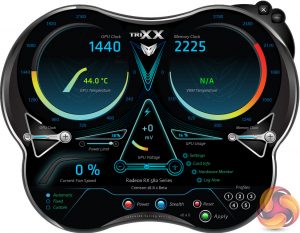
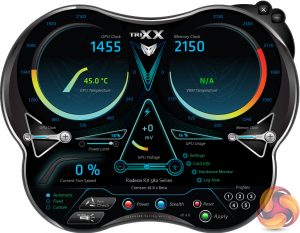
Pulse – left, Nitro+ – right
To overclock both Sapphire cards, we used TriXX – Sapphire's overclocking utility.
For the Pulse, our best result came with 1440MHz (+74MHz) on the core, and 2225MHz (+225MHz) for the memory. The power limit was set to its maximum value (+30%) and we used the auto fan curve.
For the Nitro+, our best result came with 1455MHz (+44MHz) on the core, and 2150MHz (+150MHz) for the memory. The power limit was set to its maximum value (+50%) and we used the auto fan curve.
There is definitely some benefit to overclocking these cards. We know the RX 500 series cards are generally limited overclockers – the chip can only go so far, and most of them are pushed pretty far out of the box anyway. I was still quite impressed with +74MHz to the Pulse card, though – it may not be as fast as the Nitro+, but relatively speaking it is a bigger overclock. That closed the frequency gap between the two cards to just 15MHz.
In the real world, this put the two cards neck-and-neck – a score difference of just 34 in Fire Strike, and just 15 in Time Spy, is incredibly close. The difference was just 1FPS on average in Far Cry 5, too.
AMD Adrenalin Driver Features
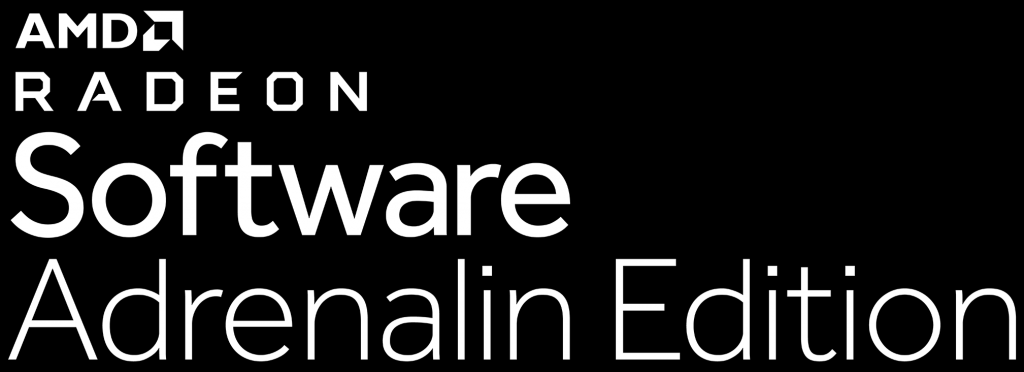
As part of our comparison of these two RX 580s, Sapphire also asked us to highlight four main features found within AMD's Adrenalin driver: Wattman, Chill, ReLive and Freesync.
Wattman
At its core, Wattman is quite simple to use – it is AMD's own overclocking utility which lets you adjust the core frequency, memory frequency and fan speed of your chosen graphics card.
What many people don't know is that you can actually save different profiles – perhaps you want one profile to have the core frequency and fan speed cranked for gaming, but you want a separate profile to stay cool and quiet while browsing the web. You can also share these profiles as well – they simply save as .XML files.
That means you can share them with friends who have the same graphics card as you, or you can copy your old profiles to a new computer if you reset Windows.
Chill
Chill is my favourite feature of the Adrenalin driver. It's a simple but effective idea – with Chill enabled, your frame rate behaves as normal when moving around in-game. When you stop moving, however, Chill detects this and drops the frame-rate, meaning your GPU frequency slows, resulting in lower power draw.
It can be enabled globally from the ‘global graphics' tab within the driver settings. However, you can also set FPS targets on a per-game basis – so the game knows how low you want the FPS to drop when you stop moving.
To test this, I benchmarked a minute of gameplay within Far Cry 5. During this playthrough, I would run for 10 seconds, and then stop moving for 10 seconds, and repeat until the minute was up. We did this three times: with Chill disabled, with Chill enabled globally, and then with a custom FPS target of 40-60 set for Far Cry 5 within the driver settings.
As you can see, having Chill enabled globally does not get the best from the technology. Instead, when you set a custom FPS target for each specific game, it can work wonders. The average FPS in our Far Cry 5 run, for instance, dropped to 44.7 – it would be right around 60FPS while I was running, but about half a second after I'd stopped, it would drop right down to 40. It's quite impressive.
This also has definite ramifications for power consumption – the total power draw dropped by 60W. For a desktop this may not be so important, but for a laptop with Vega graphics, this could be significant for the battery life of your machine.
ReLive
Next up is ReLive, which is AMD's software screen capture service. In a nutshell, it lets you record your gameplay.
It is a bit more advanced than that, though. Within the ReLive area of the software, there are four main tabs. The first is ‘global', which gives you control over the main capture settings – where the files are saved, what key shortcuts you can use to start/stop a recording and so on.
After that, we have the ‘recording' tab. Here you can set a target resolution, video and audio bitrate, as well as what codec you want to use.
Next is the ‘streaming' tab, which will likely appeal to many Twitch fans – you can link ReLive to various social media and streaming services, allowing you to stream directly onto those services from within ReLive. There are also resolution, bitrate and FPS settings here.
Lastly, the ‘overlay' tab just lets you enable whether you want an overlay on-screen while you're recording, showing your system info for instance. You can also set a custom overlay if you wish.
Freesync
This is probably the feature that our readers will be most familiar with. Freesync is AMD's adaptive sync technology which ensures your display's refresh rate adapts to the frames being outputted by your graphics card, thus ensuring no tearing.
For this to work, you do need a compatible monitor and AMD graphics card – the RX 580 being a perfect example. To turn Freesync on, just go to the ‘display' section within Radeon settings and check the ‘Freesync' box to on. Sadly, my monitor does not support Freesync so the option is greyed out, but as long as everything is compatible, you will soon be on your way to tear-free gaming.
To learn more head over to why-radeon.com.
This article has not been a review as such – we know how RX 580s perform. The GPU is, after all, over a year old now. Instead, we have been comparing two RX 580 cards from Sapphire – the Pulse and the Nitro+.
Looking first at the design of the two cards, they do look quite similar with the same matte black shroud and 95mm fans. The Pulse sports a more colourful backplate, though, which may not appeal to everybody, while the monochrome backplate on the Nitro+ is perhaps less offensive.
It is definitely worth touching on the size of the two cards as well, as the Pulse is a fair bit smaller at 230 X 125 X 40mm. The Nitro+ measures 260 X 135 X 43mm. Depending on your use-case for the graphics card this could play a big part in your decision – if you have a roomy, ATX desktop to fill then the Nitro+ is likely to be your choice. If, however, you are putting together a compact HTPC for the living room, the Pulse will probably be the better option.
When it comes to performance, there is very little to split the cards – the only difference in their specification is that the Nitro+ is clocked at 1411MHz, compared to 1366MHz for the Pulse. In our real-world testing, this meant the Nitro+ did edge ahead in games – but only just. The biggest gap between the two cards was just 2.4 FPS playing Middle-Earth: Shadow of War.
Rather strangely, that means performance is probably the last thing to think of when it comes to choosing between the two – not something we often say when giving buying advice for a graphics card!
Instead, thermals and noise levels are probably going to make more of a difference to you on a day-to-day basis. In that regard, we have to say the Nitro+ did fantastically well. Not only does it run slightly faster than the Pulse, but it does so with significantly lower fan speeds – and thus noticeably lower noise levels. On top of that, its core temperature only peaked at 75C.
This is actually the same peak temperature that the Pulse hit, but it was noisier and couldn't run its core frequency as high while doing so. Both cards do employ a ‘fan stop' mode, where the fans just turn off under light loads, but if you want a quieter gaming experience, the Nitro+ is the way to go.
Power consumption is also worth touching on, but only to say that the real-world difference between the two cards is negligible. This is because, despite the Nitro+ pulling 26W more under load, the cost of this over the course of a year is barely £3 – not enough to make a difference in your purchasing decision.
Lastly, can overclocking sway the contest one way or the other? Well, we were able to add +74MHz to the Pulse, but only +44MHz to the Nitro+. This still resulted in the Nitro+ being faster, but at this point the performance gaps were so marginal they became irrelevant. RX 580s don't tend to overclock that well in the first place, so I wouldn't think buying one or the other for any supposed overclocking potential would be the best idea.
So, in sum – what have we learned? The Nitro+ is the faster card, but only just. It does, however, run quieter – but also draws more power. The Pulse, on the other hand, is definitely noisier – but it is also significantly smaller and costs less money.
So while we ultimately can't make the buying decision for you, hopefully now you have all the information you need to make an informed choice. If it were me, I would go for the Nitro+, but only because I have the space for a larger card. Depending on your priorities, there are pros and cons for each model.
You can buy the Pulse for £260 HERE, while the Nitro+ can be found for £299 HERE.
Sapphire RX 580 Pulse Pros:
- Compact.
- Draws less power.
- Cheaper.
Sapphire RX 580 Pulse Cons:
- Louder.
- Slightly slower.
- Backplate design may not appeal to everyone.
Sapphire RX 580 Nitro+ Pros:
- Quieter.
- Faster out of the box.
- Colour-neutral backplate design.
Sapphire RX 580 Nitro+ Cons:
- More expensive.
- Will fit in less cases.
- Draws more power.
KitGuru says: Both the Sapphire Pulse and Nitro+ RX 580s have their use-cases – the Nitro+ is faster out of the box and also quieter, but the Pulse will appeal thanks to its diminutive size and lower price tag.
 KitGuru KitGuru.net – Tech News | Hardware News | Hardware Reviews | IOS | Mobile | Gaming | Graphics Cards
KitGuru KitGuru.net – Tech News | Hardware News | Hardware Reviews | IOS | Mobile | Gaming | Graphics Cards



